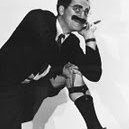Honda Cbr 250R 2011
-
Recently Browsing 0 members
- No registered users viewing this page.
-
Topics
-
-
Popular Contributors
-
-
Latest posts...
-
339
Trump's crackdown on LA protests is pure hypocrisy
you saw police being killed at the January 6th riots??? That's weird, maybe it was the woman protester you saw getting shot by police. How many officers were killed at the capital on the 6th? = 0 How many died = 5 one had a Stroke a few days later, it was most likely brought on by being hit with a fire extinguisher. The other 4 all committed suicide days and months later. The main stream media like to push that they all died that day. -
151
Greta Thunberg’s Gaza Aid Voyage Sparks Controversy After Senator’s Mocking Remark
More activists on their way to Gaza: Hundreds of activists in Tunisia on Monday launched a land convoy heading towards Gaza in a bid to break Israel's siege on the Palestinian territory. Organisers said the nine-bus convoy was not bringing aid into Gaza, but rather aimed at carrying out a "symbolic act" by breaking the blockade on the territory described by the United Nations as "the hungriest place on Earth". The "Soumoud" convoy, meaning "steadfastness" in Arabic, includes doctors and aims to arrive in Rafah, in southern Gaza, "by the end of the week", activist Jawaher Channa told AFP. 'Break the siege': Tunisians launch 'symbolic' Gaza-bound mass land convoy -
58
Crime Phuket Police Hunt Foreigners After Brutal Assault on Mall Security Guard
Aren’t you going to make up your own version of events defending the foreigners and blaming the 18 year old Thai and Thailand? Or are you leaving it all to Fred to go alone on this one?- 1
-

-
58
Crime Phuket Police Hunt Foreigners After Brutal Assault on Mall Security Guard
I must have been asleep for the last hundred years. Tell me again, when was the HIGH-level mass tourism years here?- 1
-

-
60
I need rotator cuff surgery my insurance turned me down where to go for less than 350,000b?
I had cycling friend in Chiang Mai many years ago that liked to go at speeds down mountains. Previously he was a runner but just got into cycling mountains since moving to Chiang Mai. He lasted a number of years until one day on a trip in Phetchabun on that famous mountain he was going down and had a big crash and woke up in the hospital. Thinks he hit a dog maybe but blacked out and couldn't remember the crash. This shook him so badly he quit cycling then and there and went back to running. Moved back down to Pattaya even where we lived before and owned a condo. I've managed to survive for 20 years on the bike in Thailand but it's only a matter of time. In fact the other day I saw the recent wreckage of a trailer carrying rocks that lost control around a steep sharp bend and crossed over the lane crashing into the side of the mountain. I bike up that road at least once a week and if I was coming up at the exact moment it would have been game over. No avoiding that one. Here is a picture of that exact location. Imagine biking slowly up that (it's about 10% grade) and seeing a trailer coming flying at you. That's the reality of biking in Thailand so do so at your own risk. -
-
-
Popular in The Pub


.thumb.jpg.3ee24d9400fb02605ea21bc13b1bf901.jpg)
.thumb.jpeg.d2d19a66404642fd9ff62d6262fd153e.jpeg)




.thumb.jpeg.42eea318e3350459f0aaaa5460326bca.jpeg)

Recommended Posts
Create an account or sign in to comment
You need to be a member in order to leave a comment
Create an account
Sign up for a new account in our community. It's easy!
Register a new accountSign in
Already have an account? Sign in here.
Sign In Now